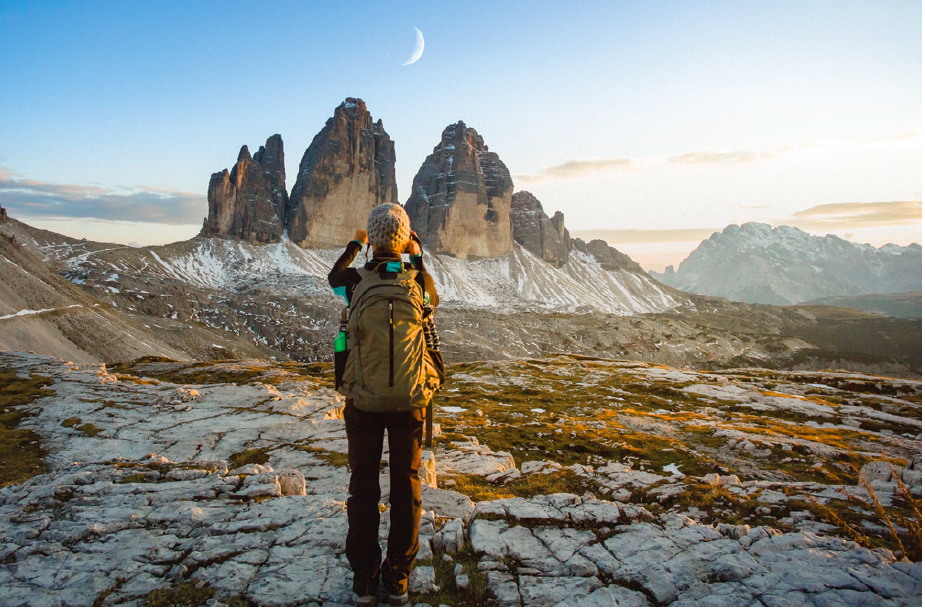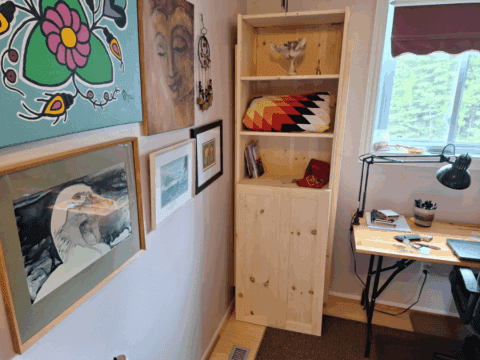Donalie Caldwell had an epiphany a decade ago outside the ancient Edzná ruins, a Mayan site in Mexico. The retired nurse from Maple Ridge, B.C., realized she’d been at this exact spot before — in another lifetime. A believer in reincarnation, she felt her past life come back to her in a flash. “The knowledge of it smacked me on the forehead. I knew that this had been my home, and I burst into tears,” says Caldwell, who was raised in the United Church. She decided to study with a Mexican shaman and now offers Mayan-style full-moon ceremonies through White Lotus Divine Healing, a “metaphysical boutique” in Port Moody, B.C.
The trip was one of several she’s taken with Sacred Earth Journeys, a British Columbia company that specializes in “opportunities for spiritual growth and personal transformation.” Its tours include Ayurveda healing retreats in India and a “spiral journey” into the mythological heart of Ireland. Experiences like these appeal to spiritual seekers, who represent as much as $47 billion in annual tourism spending, according to a 2013-14 report by the Global Wellness Institute.
Religious pilgrimages have been popular for millennia, but there’s been a shift in recent years from faith-based excursions to mindful travel in the form of ecotourism, volunteering, wellness getaways, detox vacations and unplugged retreats. A United Nations conference on spiritual travel noted the move from the traditional three S’s of tourism — “sun, sand and sex” — to the three emerging S’s: “serenity, sustainability and spirituality.”
The trend is driven by several factors, from aging boomers scratching destinations off their bucket lists to bestselling spiritual travel memoirs, most notably Elizabeth Gilbert’s Eat, Pray, Love, which recounts her post-divorce tour through Italy, India and Indonesia. It’s also fuelled by “seekers dissatisfied with institutional religion,” says travel writer Lori Erickson, whose book Holy Rover: Journeys in Search of Mystery, Miracles, and God documents a dozen of her life-changing spiritual travels, including searching for the mythical “hidden people” (a.k.a. elves) in Iceland and hiking the steep trails of Machu Picchu, Peru, after the death of a close friend. The spiritual-but-not-religious are hungry for the kind of spiritual growth such treks can offer. Most of them aren’t interested in finding God; they’re searching for themselves.
“Travel can offer transformation,” says author and tour guide Phil Cousineau, who once led a group to literary sites in Ireland with the poet Robert Bly. He is positively lyrical on the subject of spiritual travel in his book The Art of Pilgrimage: The Seeker’s Guide to Making Travel Sacred: “All our journeys are rhapsodies on the theme of discovery,” he writes.
Cousineau says there’s a big difference between a vacation and a spiritual journey: one empties your mind, while the other fills your soul. “We travel for answers we can’t find at home, and it’s often the stranger in a strange land who helps you see yourself for the first time.”
A distinguishing factor of spiritual travel is that it should be somewhat difficult, a metaphorical pilgrim’s progress over rough terrain, says Erickson. “It takes a lot more effort to sit for days at a silent meditation retreat than it does to sit on the beach.”
Caldwell doesn’t plan to sit on a beach anytime soon — she is heading to Thailand to visit Buddhist sites this spring. But that doesn’t mean she won’t consider an excursion that’s less edifying. “One day I’d like to do a cruise,” she says.














